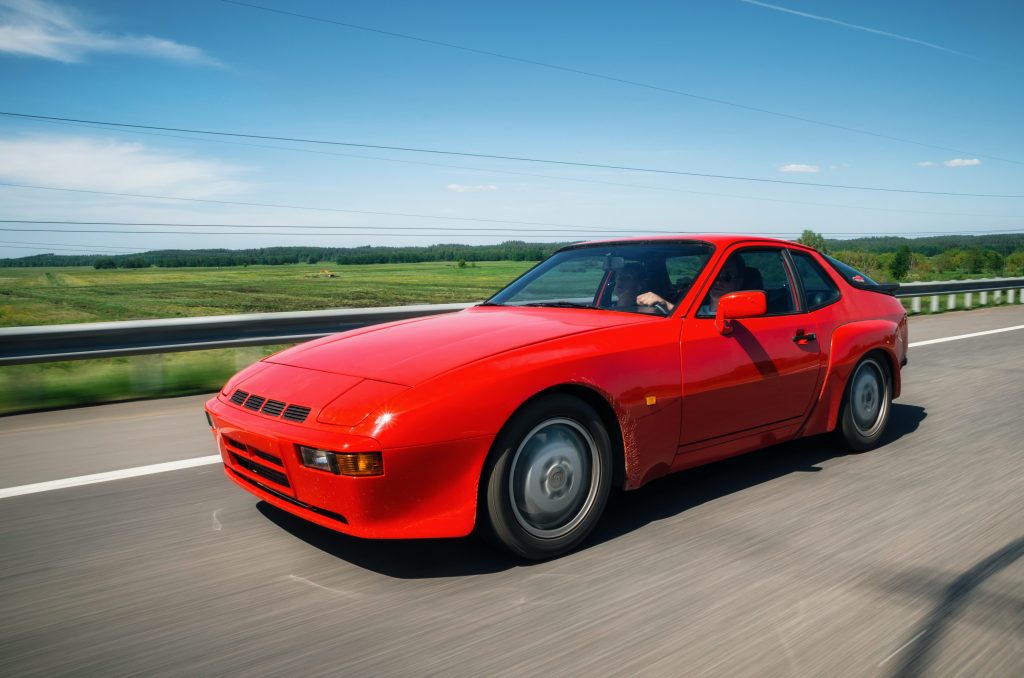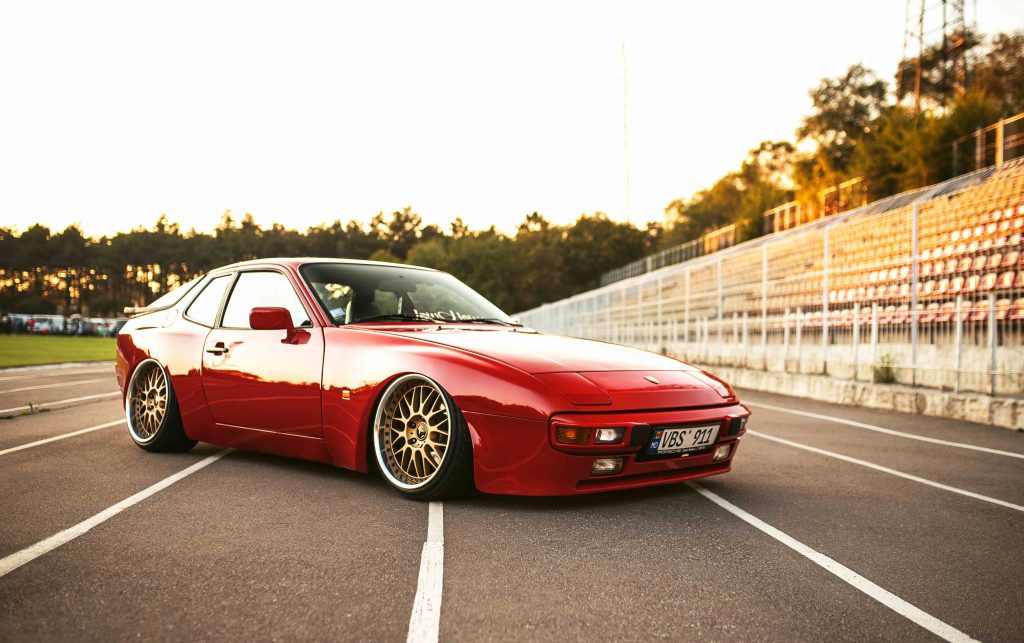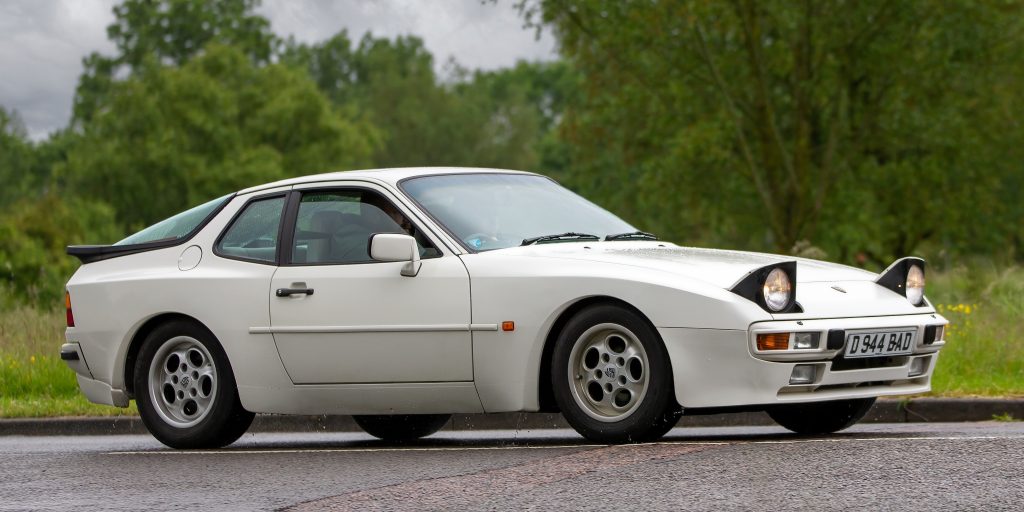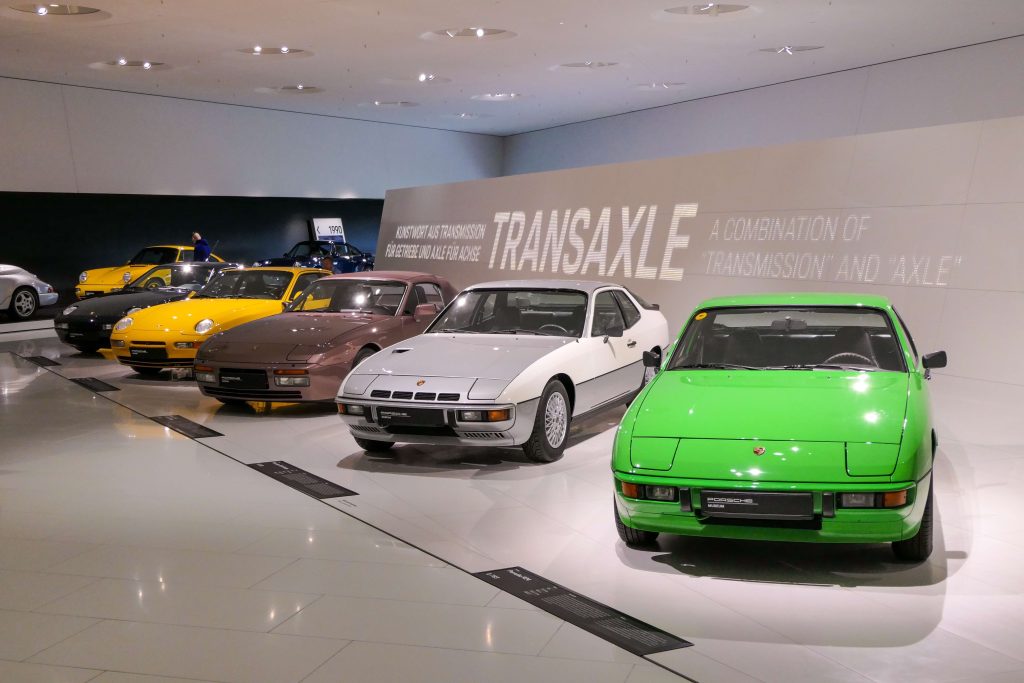Why Pre-ordering a Used or New Porsche Is the Best Option For You?

Minsk, Belarus - May 26, 2018: Red vintage Porsche 944 sports car speeding along road with motion blur effect.
The Porsche 944 is one of the most iconic sports cars in history. First introduced to the market in 1982, it quickly became a favorite among car enthusiasts and remains so to this day. Developed as an evolution of the earlier Porsche 924 model, the 944 featured improved aerodynamics, increased engine power, and more luxurious interior appointments than its predecessor. The 944 also showcased advanced technology for its time such as anti-lock brakes, full-time all wheel drive, and electronic fuel injection. In addition to its performance advantages over other vehicles at the time, it had a relatively affordable price point which made it accessible to many drivers.

Berlin/Germany/ Summer 2020, Red Porsche 944 on a race track.
Porsche 944 2.5 (1982-1988)
The Porsche 944 2.5 model was first introduced in 1982 and was designed to be a more affordable alternative than the 911 series from which it derived its style. It featured an inline-4 engine with a displacement of 2.5 liters, producing 147 horsepower at 5,800 rpm and 159 lb-ft of torque at 4,200 rpm. The car had a top speed of 131 mph (210 km/h) and could accelerate from 0-60 mph (0-96 km/h) within 8 seconds.
In 1984, Porsche made some changes to the engine by increasing its power output to 163 horsepower at 6,000 rpm while dropping the torque rating slightly to 157 lb-ft at 4500rpm; this version is often referred to as the "2½" or "S". In addition, minor external modifications were made such as revised front and rear spoilers for improved aerodynamics. In 1985 Porsche released their final iteration of the 944 line before introducing their next generation 968 offering: The limited edition "944 Turbo" featuring a turbocharged version of the same basic engine that produced 217 horsepower along with 258 lb.-ft of torque making it one of the fastest cars available in its class during that time period.
A few years later in 1988 saw further developments with what would eventually become known as "944 S2" which combined elements from both earlier versions including features like 16 inch wheels instead 15 inch ones found on previous models along with more aggressive body styling meant offer better stability & handling performance when taken out onto racetracks; these changes helped give rise popularity amongst racing enthusiasts who favored vehicle's nimble characteristics over those offered other sports coupes market then .
In 1989 came final update known simply "944 S3" where engineers decided increase engine size 3 liter mark produce 208bhp @ 6000rpm alongside 221lb ft torque 5000rpm - giving car top speeds 140mph+ depending route driven . This particular model also featured revised suspension setup bringing even tighter cornering ability meaning drivers could enjoy true racecar experience whilst still being comfortable enough use everyday streets too!
Overall this means has been quite successful production run since inception almost 40 years ago; many consider vehicles classic now thanks enduring longevity design concept - something testament company's commitment creating iconic machines will stand test time well into future!

Stony,Stratford,Bucks,Uk. June,5th,2022. 1986,Porsche 944
Porsche 944 S (1987-1988)
The Porsche 944 S was a sports car manufactured by German automaker Porsche from 1982 to 1991. It was the successor to the popular Porsche 924 and featured an updated engine, suspension, and interior refinements. The original version of the 944 S debuted at the 1983 Frankfurt Motor Show and went on sale in April 1984 as a 1985 model.
The 944 S was powered by an updated version of its predecessor's 2.5-liter inline four-cylinder engine which had been reworked for improved power output with fuel injection and increased compression ratio (9:1). This resulted in 188 horsepower being produced at 5,800 rpm compared to 143 hp from the regular 924's naturally aspirated engine. Other features included larger brakes with ABS available as an option, revised gearing ratios for higher performance along with stiffer springs/shocks which provided improved handling characteristics over previous models.
In 1987, for its fourth year of production, Porsche released the more powerful "S2" variant equipped with a 3-liter DOHC 16V powerplant producing 208 hp coupled to either a five-speed manual or three-speed automatic transmission depending upon market demands. In addition to enhanced performance figures over earlier models it also included further refinements such as driver side airbags; sunroof; cruise control; electric windows & mirrors; thicker antiroll bars etc..
By 1989 sales began to decline due mainly to competition from newer Japanese sports cars such as Honda NSX & Nissan 300ZX while European rivals like BMW E30 M3 were becoming increasingly popular among enthusiasts so ultimately production ceased in 1991 after 8 years on sale & some 86k units made during that time period making it one of most successful Porsches ever built up until then!

Stuttgart, Germany - 9 July 2022: Classic and collectable Porsche 944 sports car in the Porsche Museum.
Porsche 944 2.7 (1989)
The Porsche 944 2.7 model was first introduced in the early 1980s, and it quickly became a popular choice amongst luxury sports car enthusiasts. It was powered by a naturally-aspirated 2.7-liter four cylinder engine that produced 143 horsepower and 156 lb-ft of torque. This powerplant was mated to either a five-speed manual transmission or an optional three-speed automatic gearbox.
In 1985, the 944 2.7 underwent some minor changes which included new headlights, improved suspension tuning for better handling, and larger brakes for improved stopping power. The following year saw the introduction of the Turbocharged version of the 944 with increased performance levels from its turbocharged 249 horsepower engine as well as other improvements such as revised styling elements, bigger wheels, upgraded interior trim pieces and more powerful brakes among others things; this model became known as the "944T" (Turbo).
By 1988 Porsche had made further updates to both models; these included redesigned bodywork with flush headlamps set into aerodynamic covers instead of pop up units previously used on earlier cars; additional engineering refinements were also added such as an exhaust header specifically designed for each cylinder bank which helped increase overall performance levels even further than before while improving fuel economy at higher speeds too - these changes earned this particular variant its own distinct name - "951S" (Super).
The final iteration of this classic German sports car came just two years later in 1990 when Porsche released their most powerful production version yet - dubbed simply 'the S2′ - it featured an improved 3 liter twin cam 16 valve engine capable producing 208 hp & 213 lb ft torque respectively alongside several other design enhancements including stiffer springs & dampers plus larger brake discs all round with ABS standard equipment across all models from here onwards until production finally ceased in 1991 bringing about one era whilst simultaneously ushering another: enter stage left…the mighty 911!
From its birth in 1982 to its retirement in 1991, The Porsche 944 has gone through various stages of development and refinement. While it may not be as popular or well-known as other models, it still stands out for its unique design and performance capabilities, making it a timeless classic that will never go out of style. Whether you're a fan or just curious about the evolution of this legendary vehicle, exploring the Porsche 944 model timeline is sure to provide you with plenty of insight into one of automotive history's best kept secrets.